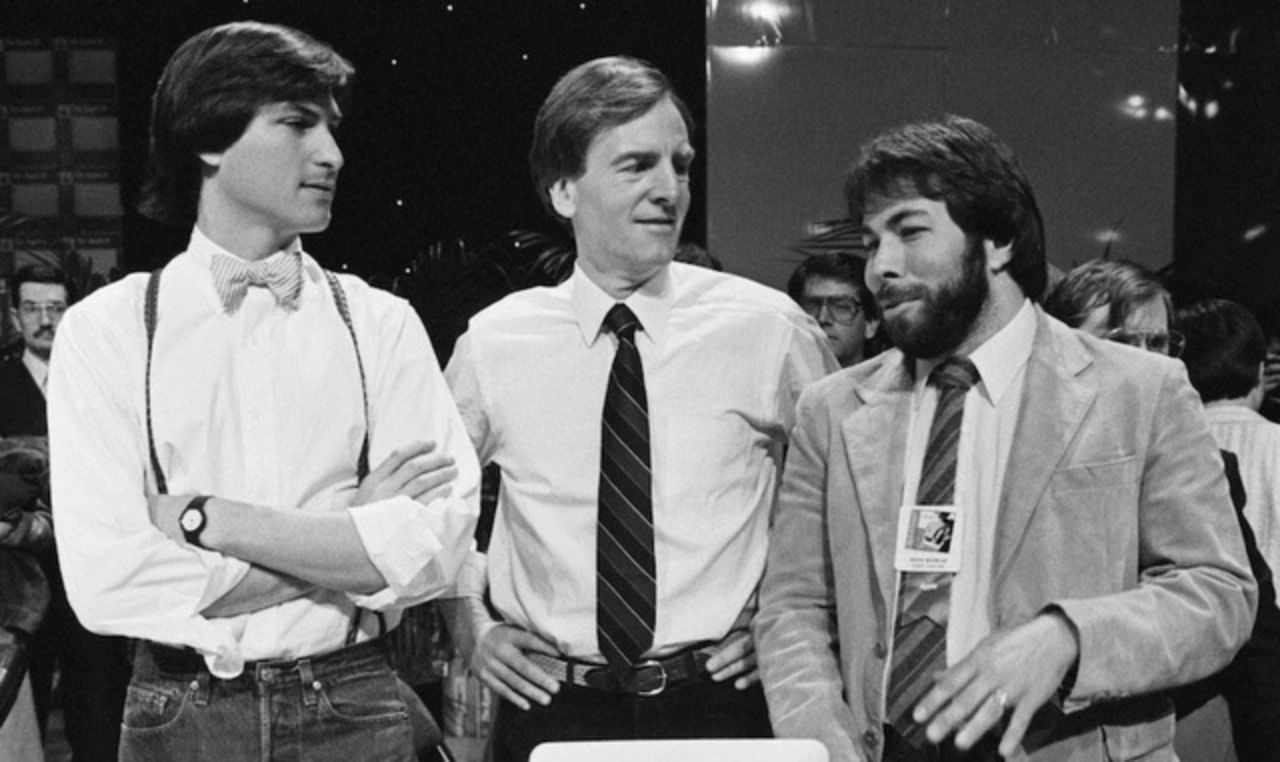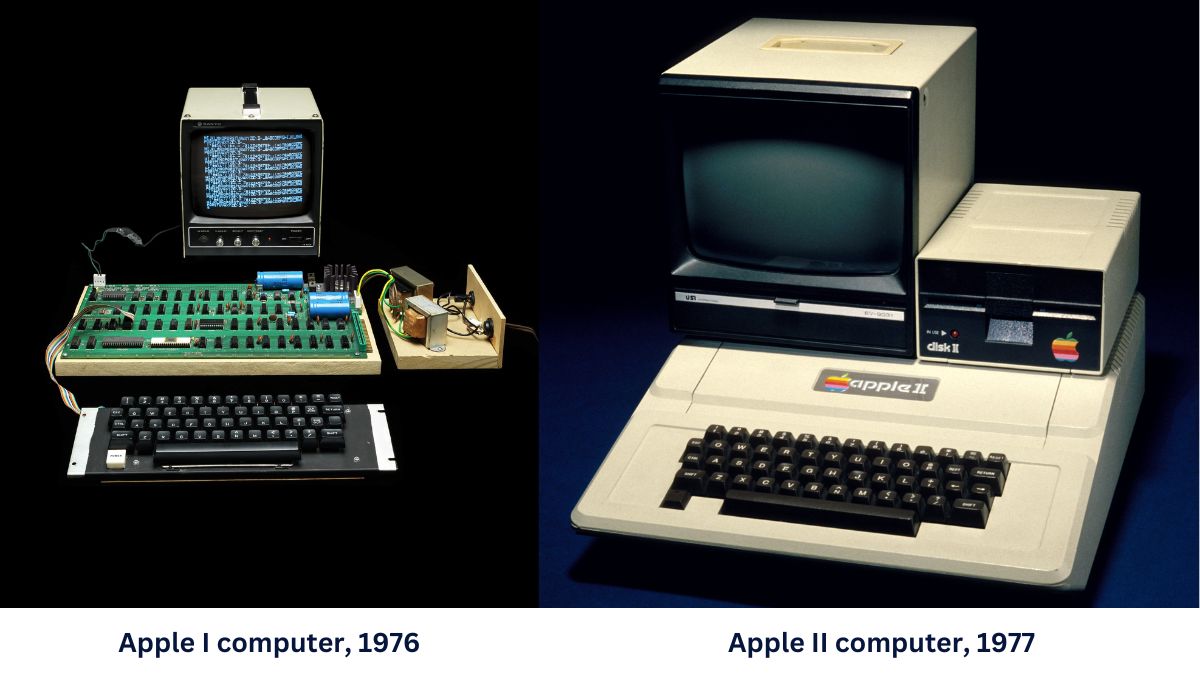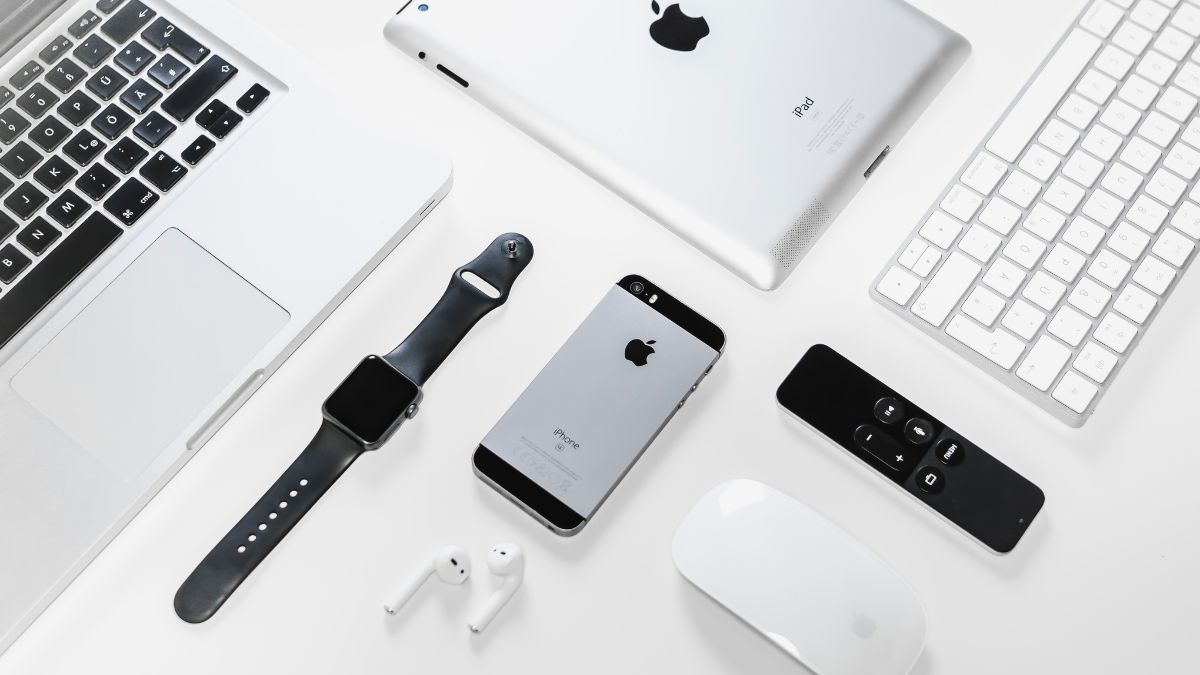The Evolution of Apple: From Garage to Tech Giant
Apple Inc. is a company that needs no introduction. From its humble beginnings in a garage to becoming one of the most valuable companies in the world, Apple has transformed the tech industry with its innovative products and iconic branding. In this blog article, we will explore the fascinating journey of Apple, discussing its founders, early products, pivotal moments, and the impact it has had on various industries. Let’s dive in!

1. Who were the founders of Apple and what motivated them to start the company?
Apple was founded by Steve Jobs, Steve Wozniak, and Ronald Wayne in 1976. Steve Jobs had a vision of bringing user-friendly computers to the masses, while Steve Wozniak was a brilliant engineer with a passion for creating innovative electronics. They were motivated by a shared desire to revolutionize the personal computing experience and empower individuals with technology.
2. What were the early products and innovations that Apple introduced?

Apple’s first product was the Apple I computer, introduced in 1976. It was a bare-bones circuit board that required users to add their own keyboard, monitor, and power supply. The Apple II, released in 1977, was the company’s breakthrough product, featuring a fully assembled computer with color graphics and an open architecture. It became a commercial success and established Apple as a key player in the emerging personal computer market.

3. How did Apple’s iconic logo and branding come to be?
The iconic Apple logo with a bitten apple was designed by Rob Janoff in 1977. The logo was inspired by a conversation Steve Jobs had with Janoff, where he expressed his preference for a simple and recognizable logo. The bite in the apple was added to ensure that the logo wouldn’t be mistaken for a cherry or other fruit. Over the years, Apple’s branding has become synonymous with sleek design, elegance, and innovation.
4. What challenges did Apple face in its early years and how did the company overcome them?
Apple faced several challenges in its early years, including intense competition from other computer companies, limited resources, and the departure of key team members. Additionally, the high price of their products made it difficult to compete in the market. However, Apple overcame these challenges through its relentless focus on innovation, strategic marketing, and the introduction of groundbreaking products that captured the imagination of consumers.
5. Discuss the significance of the Apple I and Apple II computers in shaping the company’s trajectory.
The Apple I and Apple II computers played a pivotal role in shaping Apple’s trajectory. The Apple I was the company’s first product, which laid the foundation for future innovations. The Apple II, with its user-friendly interface and advanced features, became a symbol of the personal computing revolution. It propelled Apple into the mainstream and set the stage for the company’s future successes.
6. How did the introduction of the Macintosh in 1984 revolutionize the personal computer industry?
The introduction of the Macintosh in 1984 revolutionized the personal computer industry. It was the first commercially successful computer to feature a graphical user interface and a mouse, making it more intuitive and accessible to users. The Macintosh brought desktop publishing to the masses and set new standards for design and ease of use. Its impact can still be felt in the way we interact with computers today.
7. Explore the role of Steve Jobs in Apple’s evolution and his impact on the company’s success.
Steve Jobs played a crucial role in Apple’s evolution and its eventual success. His visionary leadership, attention to detail, and relentless pursuit of perfection were instrumental in shaping Apple’s product lineup and brand identity. Jobs was known for his ability to anticipate consumer needs, simplify complex technology, and create a seamless integration of hardware and software. His innovative mindset and passion for design continue to influence Apple’s products to this day.
8. Discuss the decline of Apple in the 1990s and its subsequent turnaround under Steve Jobs.
During the 1990s, Apple experienced a period of decline marked by internal struggles, increased competition, and a lack of clear direction. The company struggled to find its footing in a rapidly changing tech landscape. However, in 1997, Steve Jobs returned to Apple as CEO and initiated a remarkable turnaround. Jobs streamlined Apple’s product line, introduced a new design philosophy, and unveiled the iMac, which became a major success and set the stage for Apple’s resurgence.
9. How did the introduction of the iPod and iTunes reshape the music industry?
The introduction of the iPod in 2001 and the accompanying iTunes software reshaped the music industry. The iPod revolutionized the way people listened to music by offering a portable, easy-to-use, and stylish device that could hold thousands of songs. iTunes provided a legal platform for purchasing and organizing digital music, ultimately leading to a decline in physical music sales and paving the way for the digital music era.
10. Examine the revolutionary impact of the iPhone on the mobile phone market and society as a whole.
The iPhone, introduced in 2007, had a revolutionary impact on the mobile phone market and society. It combined a touchscreen interface, internet connectivity, and a host of innovative features into a single device. The iPhone transformed mobile phones into powerful pocket computers, forever changing the way we communicate, access information, and interact with the world around us.
11. Discuss the importance of Apple’s App Store and its contribution to the growth of the mobile app ecosystem.
The App Store, launched in 2008, revolutionized the way we download and use mobile applications. It provided a centralized platform for developers to distribute their apps and for users to discover and download them. The App Store’s success has contributed to the explosive growth of the mobile app ecosystem, creating new opportunities for developers, driving innovation, and transforming various industries.

12. Explore Apple’s foray into other product categories, such as the iPad and Apple Watch.
Apple expanded its product portfolio with the introduction of the iPad in 2010 and the Apple Watch in 2015. The iPad redefined the tablet market and became a popular device for media consumption, productivity, and creative tasks. The Apple Watch revolutionized the wearable technology industry by combining health tracking, communication, and personalization in a sleek and compact device. These products further solidified Apple’s position as a leader in consumer electronics.
13. How has Apple’s approach to design and user experience influenced the tech industry?
Apple’s approach to design and user experience has had a profound influence on the tech industry. The company’s emphasis on minimalist design, attention to detail, and intuitive user interfaces has set new standards for aesthetics and usability. Apple’s focus on creating seamless integration between hardware and software has inspired other companies to prioritize user-centered design and deliver exceptional experiences across their products.
14. Discuss Apple’s transition from a computer company to a provider of a wide range of consumer electronics and services.
Apple’s transition from a computer company to a provider of consumer electronics and services began with the introduction of the iPod and continued with the iPhone, iPad, and other product lines. This shift allowed Apple to diversify its revenue streams and establish a strong presence in multiple markets. Additionally, the company expanded its offerings with services like Apple Music, iCloud, and Apple Pay, creating a comprehensive ecosystem for its users.
15. Examine the controversies and ethical concerns surrounding Apple, such as labor practices and privacy issues.
Like any major corporation, Apple has faced its share of controversies and ethical concerns. Criticisms have been raised regarding labor practices at some of its manufacturing partners’ facilities, particularly in China. Privacy issues
have also been a subject of debate, with concerns about data collection and security. It is important to acknowledge and analyze these concerns while recognizing Apple’s efforts to address them and improve its practices.
16. Discuss Apple’s financial success and its position as one of the most valuable companies in the world.
Apple’s financial success is undeniable, as the company consistently ranks among the most valuable companies globally. Its strong sales, high-profit margins, and loyal customer base have propelled it to great financial heights. Apple’s ability to generate revenue from hardware, software, and services has contributed to its impressive financial performance and market capitalization.
17. Explore Apple’s ecosystem and how the integration of hardware, software, and services benefits the company.
One of Apple’s key strengths lies in its ecosystem, which seamlessly integrates its hardware, software, and services. The tight integration allows for a cohesive user experience, where Apple devices work together effortlessly and offer a consistent interface across different platforms. This ecosystem creates a sense of loyalty among Apple users and encourages them to stay within the Apple ecosystem, benefiting the company’s sales and customer retention.
18. Discuss the impact of Apple’s retail stores and the role they play in the company’s success.
Apple’s retail stores have played a significant role in its success. These stores provide a unique shopping experience where customers can interact with Apple products, receive expert advice, and participate in workshops and events. The stores have become iconic and serve as physical representations of the Apple brand. By controlling the retail experience, Apple ensures that its products are showcased effectively and that customers have a positive and engaging encounter with its brand.
19. Examine Apple’s approach to innovation and product development, including its secretive culture and product launches.
Apple has a reputation for its secretive culture and meticulously planned product launches. The company invests heavily in research and development, focusing on groundbreaking technologies and user-centric design. Apple’s approach involves keeping its projects under wraps until they are ready for launch, building anticipation and creating a sense of excitement among consumers. This strategy has proven successful in capturing public attention and generating buzz around its products.
20. What does the future hold for Apple? Discuss potential challenges and opportunities for the company.
The future for Apple is filled with both challenges and opportunities. The company faces increasing competition in the smartphone market, evolving consumer preferences, and the need to continue innovating. However, Apple also has opportunities to expand its services, further develop its ecosystem, and explore emerging technologies such as augmented reality, artificial intelligence, and electric vehicles. By staying true to its core values of design, user experience, and innovation, Apple is well-positioned to navigate the changing landscape and continue shaping the future of technology.
Conclusion:
From its humble beginnings in a garage to becoming a tech giant, Apple’s journey has been nothing short of remarkable. The company’s founders, products, innovations, and iconic branding have shaped the tech industry and influenced society on a global scale. As Apple continues to evolve and face new challenges, its commitment to design, user experience, and innovation remains at the core of its success. With an expansive ecosystem and a passionate customer base, Apple is poised to make a lasting impact on the world of technology for years to come.